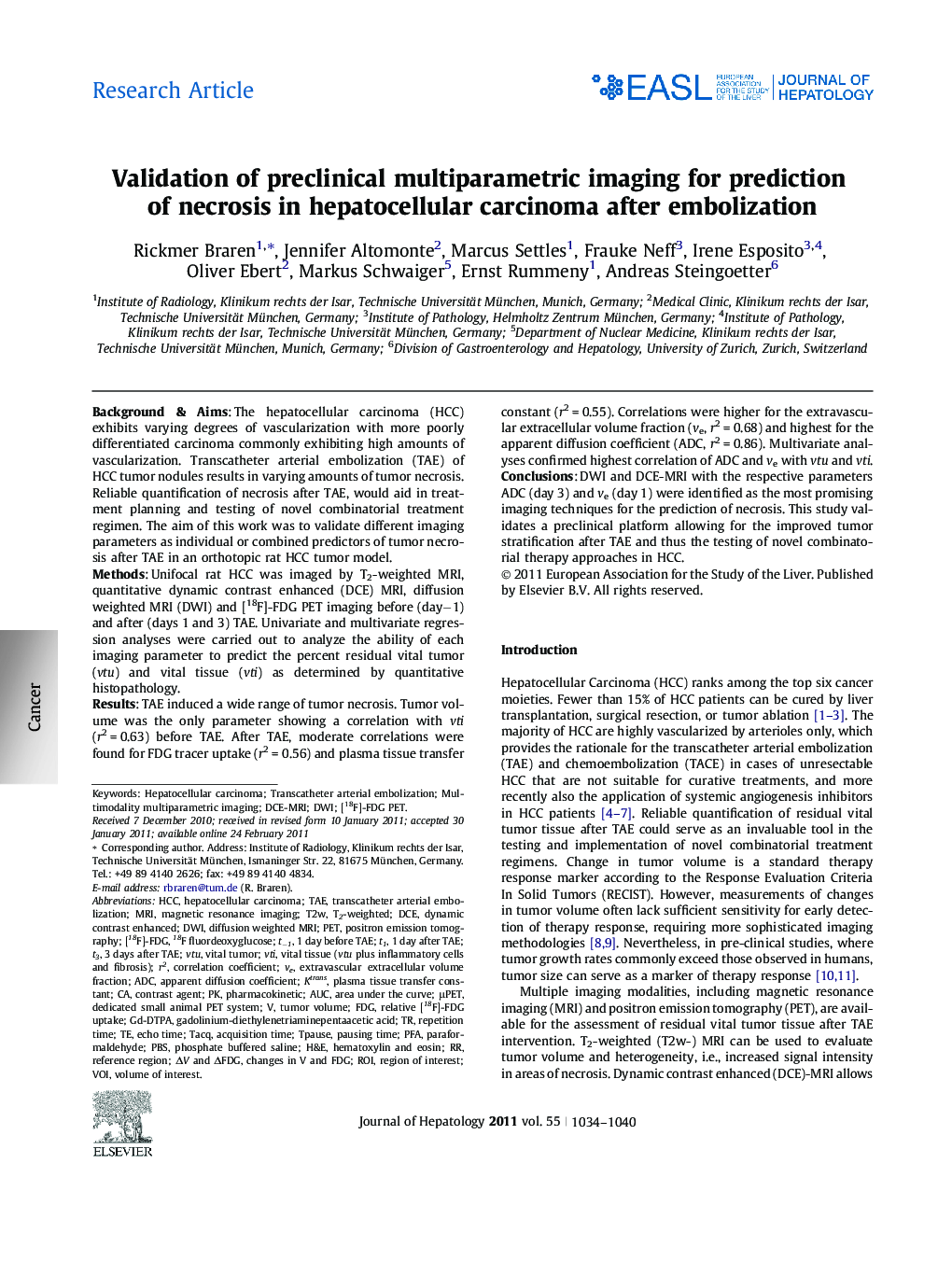| Article ID | Journal | Published Year | Pages | File Type |
|---|---|---|---|---|
| 6105895 | Journal of Hepatology | 2011 | 7 Pages |
Background & AimsThe hepatocellular carcinoma (HCC) exhibits varying degrees of vascularization with more poorly differentiated carcinoma commonly exhibiting high amounts of vascularization. Transcatheter arterial embolization (TAE) of HCC tumor nodules results in varying amounts of tumor necrosis. Reliable quantification of necrosis after TAE, would aid in treatment planning and testing of novel combinatorial treatment regimen. The aim of this work was to validate different imaging parameters as individual or combined predictors of tumor necrosis after TAE in an orthotopic rat HCC tumor model.MethodsUnifocal rat HCC was imaged by T2-weighted MRI, quantitative dynamic contrast enhanced (DCE) MRI, diffusion weighted MRI (DWI) and [18F]-FDG PET imaging before (dayâ1) and after (days 1 and 3) TAE. Univariate and multivariate regression analyses were carried out to analyze the ability of each imaging parameter to predict the percent residual vital tumor (vtu) and vital tissue (vti) as determined by quantitative histopathology.ResultsTAE induced a wide range of tumor necrosis. Tumor volume was the only parameter showing a correlation with vti (r2Â =Â 0.63) before TAE. After TAE, moderate correlations were found for FDG tracer uptake (r2Â =Â 0.56) and plasma tissue transfer constant (r2Â =Â 0.55). Correlations were higher for the extravascular extracellular volume fraction (ve, r2Â =Â 0.68) and highest for the apparent diffusion coefficient (ADC, r2Â =Â 0.86). Multivariate analyses confirmed highest correlation of ADC and ve with vtu and vti.ConclusionsDWI and DCE-MRI with the respective parameters ADC (day 3) and ve (day 1) were identified as the most promising imaging techniques for the prediction of necrosis. This study validates a preclinical platform allowing for the improved tumor stratification after TAE and thus the testing of novel combinatorial therapy approaches in HCC.
